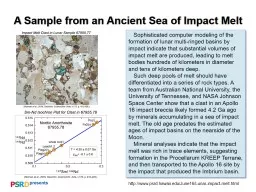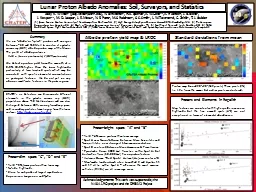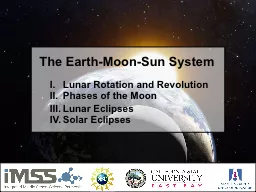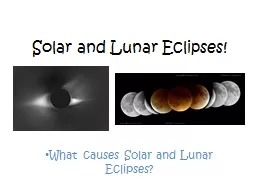PPT-Sophisticated computer modeling of the formation of lunar m
Author : liane-varnes | Published Date : 2017-06-01
Such deep pools of melt should have differentiated into a series of rock types A team from Australian National University the University of Tennessee and NASA Johnson
Presentation Embed Code
Download Presentation
Download Presentation The PPT/PDF document "Sophisticated computer modeling of the f..." is the property of its rightful owner. Permission is granted to download and print the materials on this website for personal, non-commercial use only, and to display it on your personal computer provided you do not modify the materials and that you retain all copyright notices contained in the materials. By downloading content from our website, you accept the terms of this agreement.
Sophisticated computer modeling of the formation of lunar m: Transcript
Download Rules Of Document
"Sophisticated computer modeling of the formation of lunar m"The content belongs to its owner. You may download and print it for personal use, without modification, and keep all copyright notices. By downloading, you agree to these terms.
Related Documents














